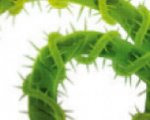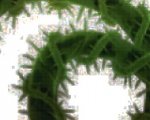Hi,
Just wondering if anyone else has to deal with compression marks.
I have tried to attach screenshots of examples of what I mean. Hopefully you can see a before image (green plane with white background), and an after image (dark green plant with a multicolour halo). These are the same image, I have just adjusted the Darkness in Photoshop to exaggerate what I am talking about.
These multicoloured Pixels are between 1% and 3% of CMYK. They should not be there as it should just be a solid white background.
I believe they are created once saved down as a JPEG. Unfortunately this is how we receive the artwork.
As you can imagine, if we created plates as supplied, the final printed image would look very dirty.
We seem to be forever tidying up this issue.
Is there a simple fix that we do not know about? Photoshop Plugins? Esko Plugins?
Any advice would be extremely appreciated.
Many Thanks
James
Just wondering if anyone else has to deal with compression marks.
I have tried to attach screenshots of examples of what I mean. Hopefully you can see a before image (green plane with white background), and an after image (dark green plant with a multicolour halo). These are the same image, I have just adjusted the Darkness in Photoshop to exaggerate what I am talking about.
These multicoloured Pixels are between 1% and 3% of CMYK. They should not be there as it should just be a solid white background.
I believe they are created once saved down as a JPEG. Unfortunately this is how we receive the artwork.
As you can imagine, if we created plates as supplied, the final printed image would look very dirty.
We seem to be forever tidying up this issue.
Is there a simple fix that we do not know about? Photoshop Plugins? Esko Plugins?
Any advice would be extremely appreciated.
Many Thanks
James

















